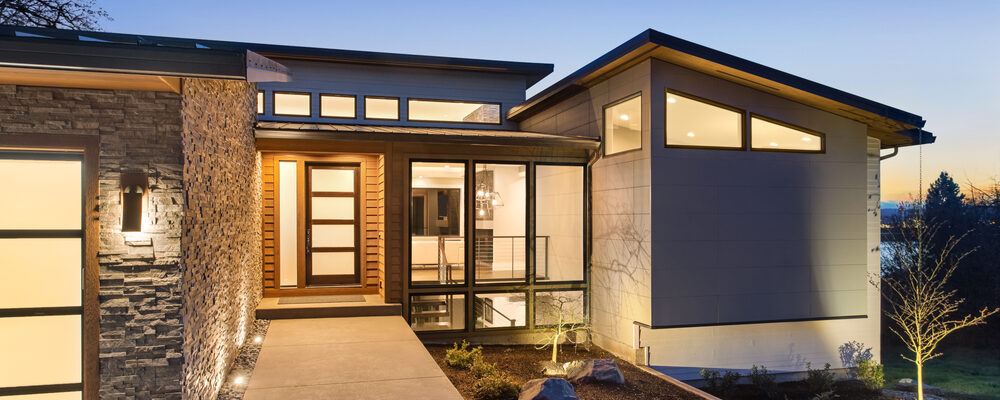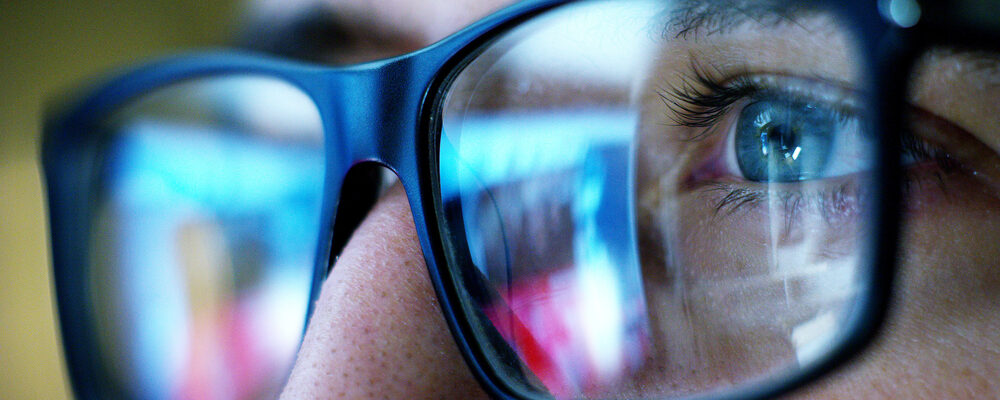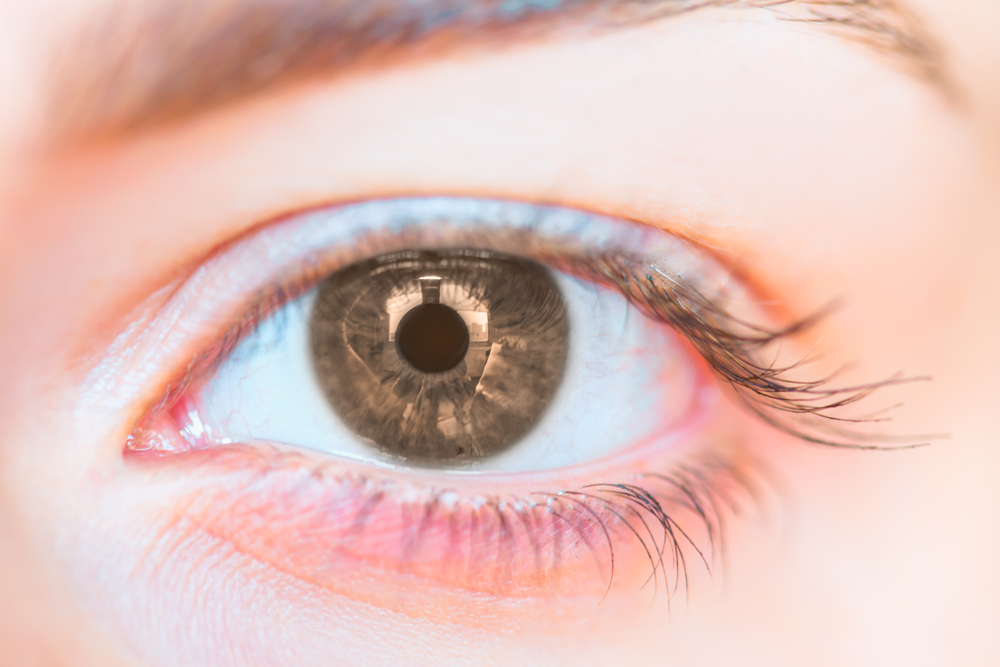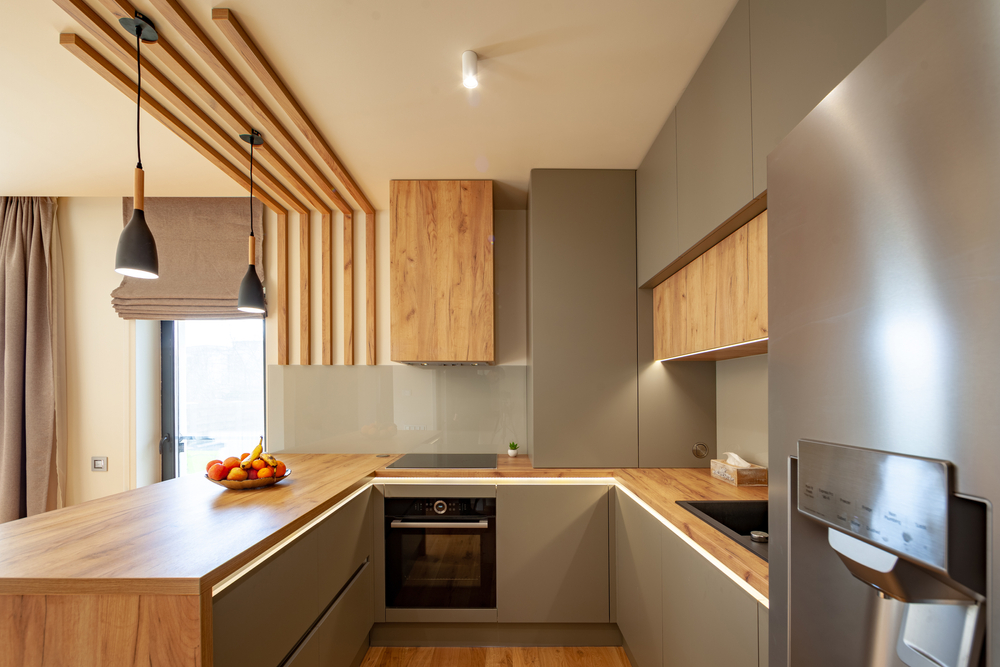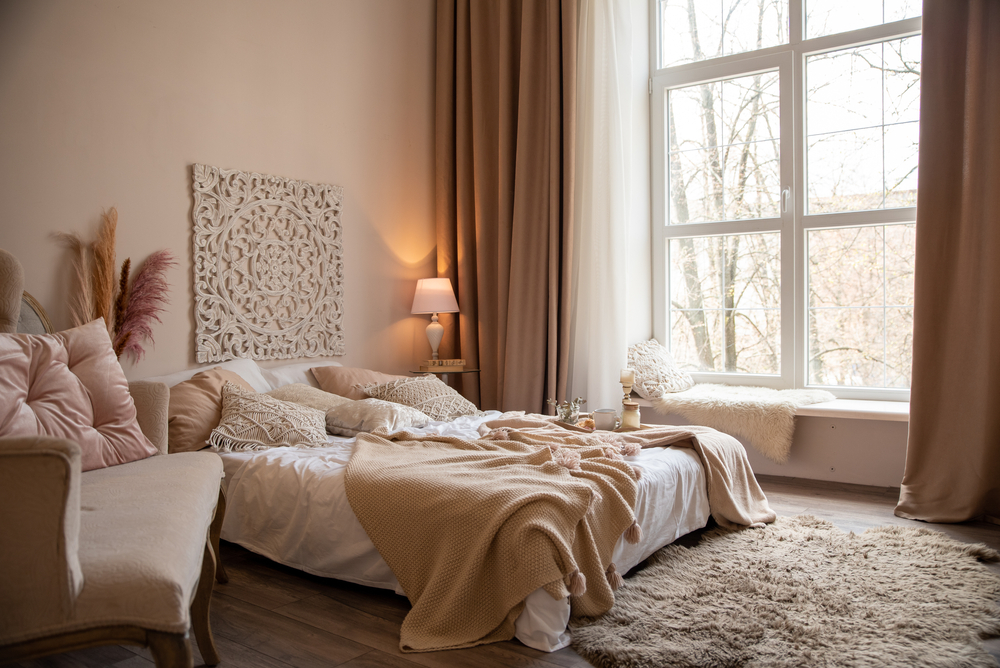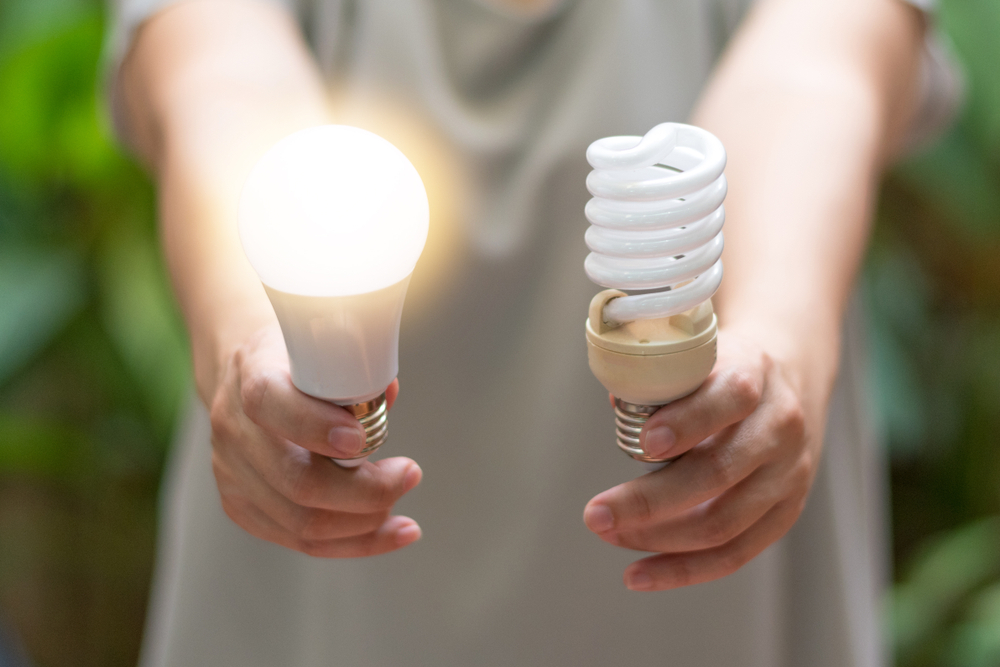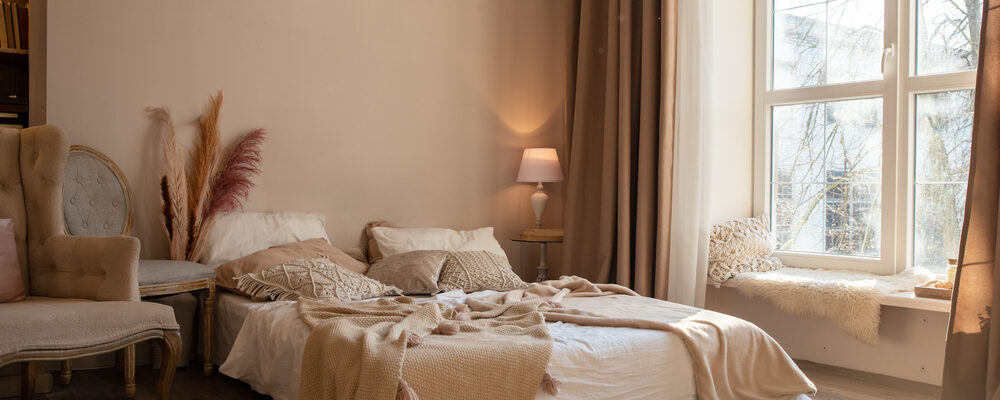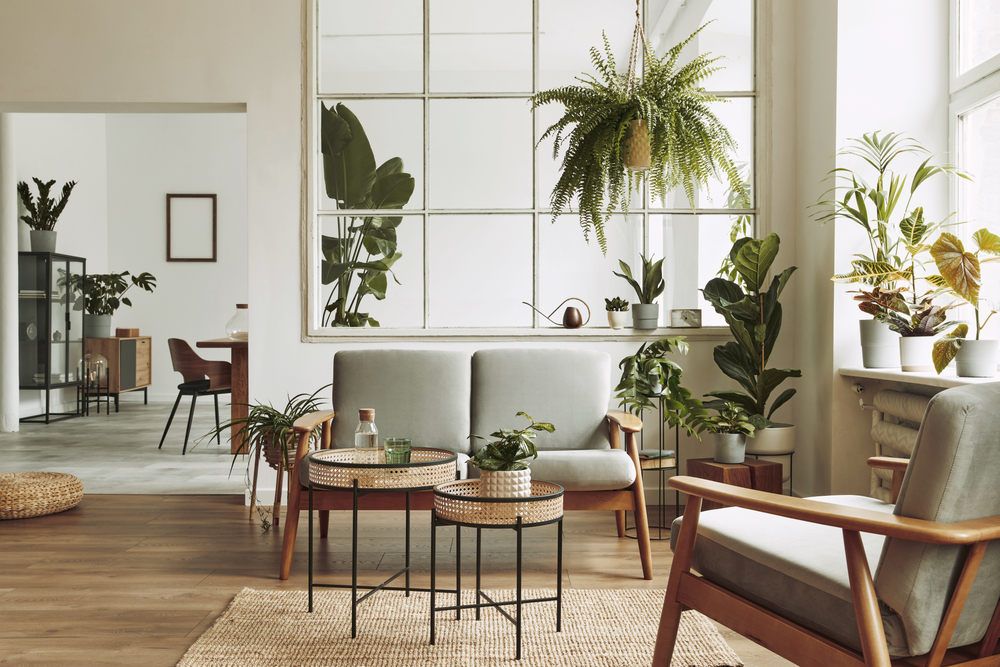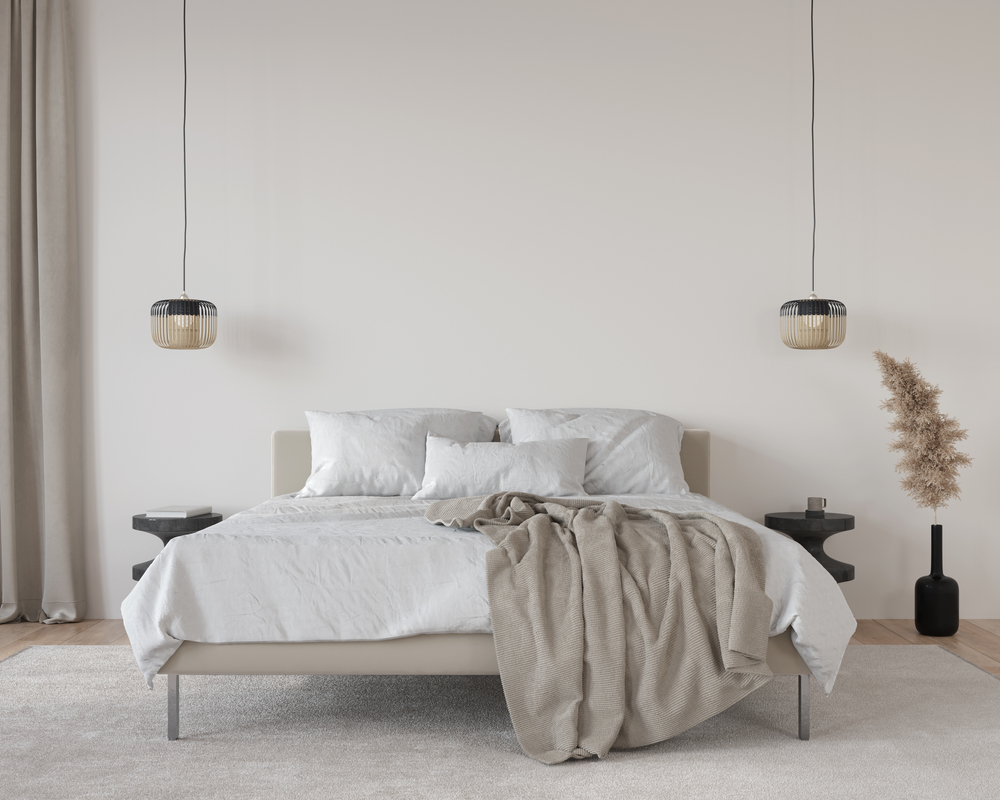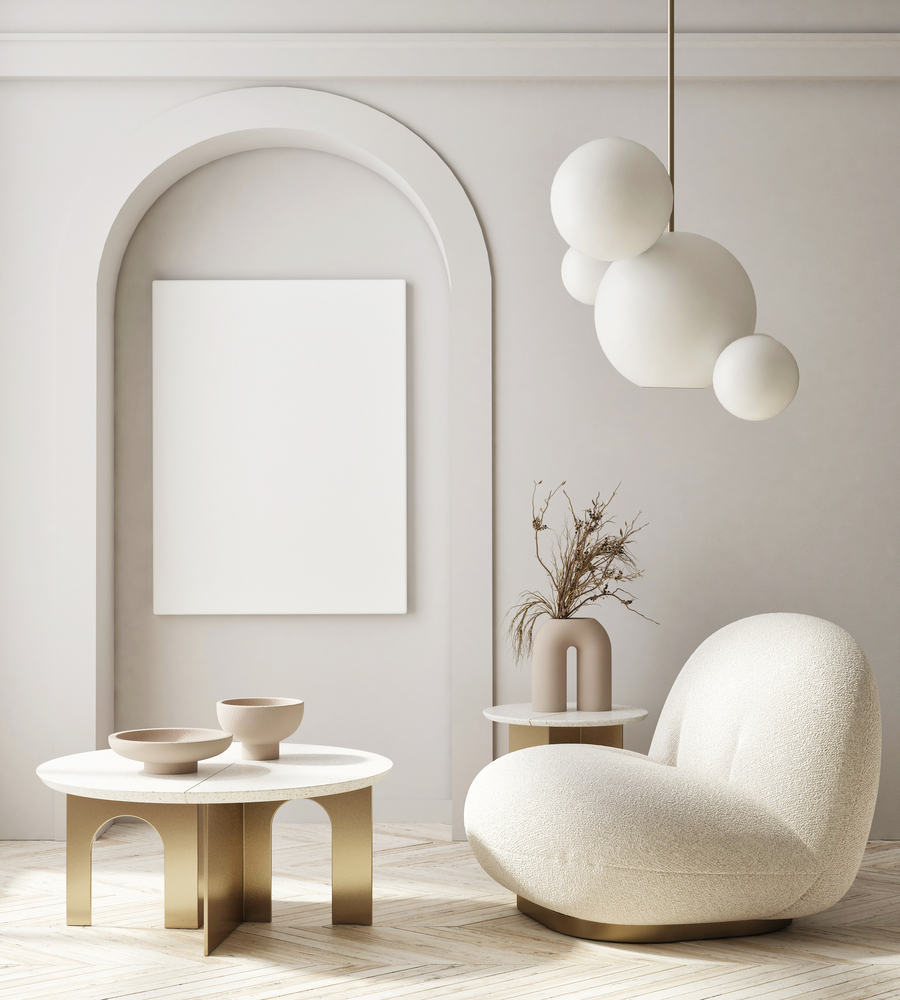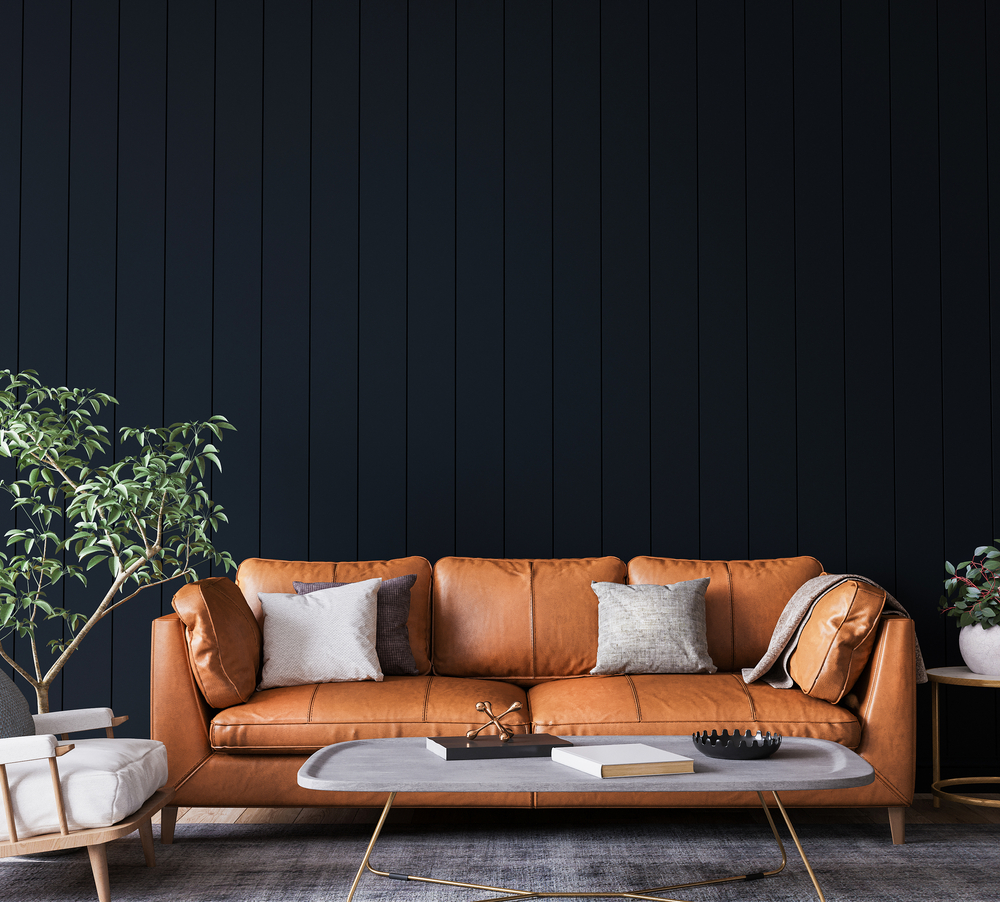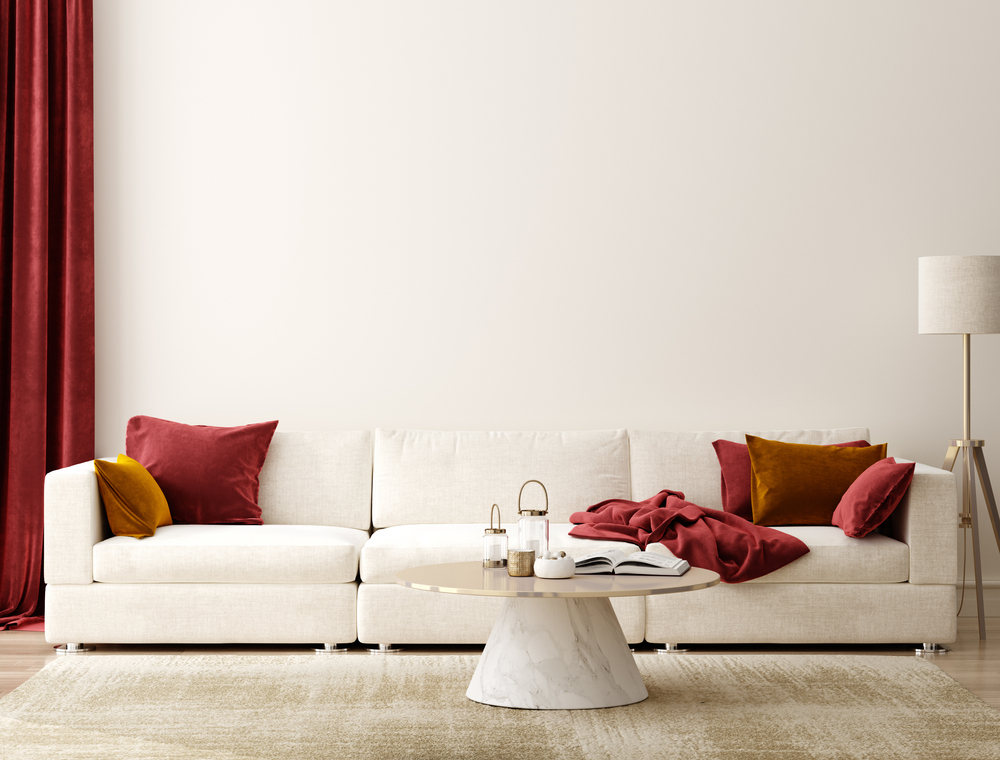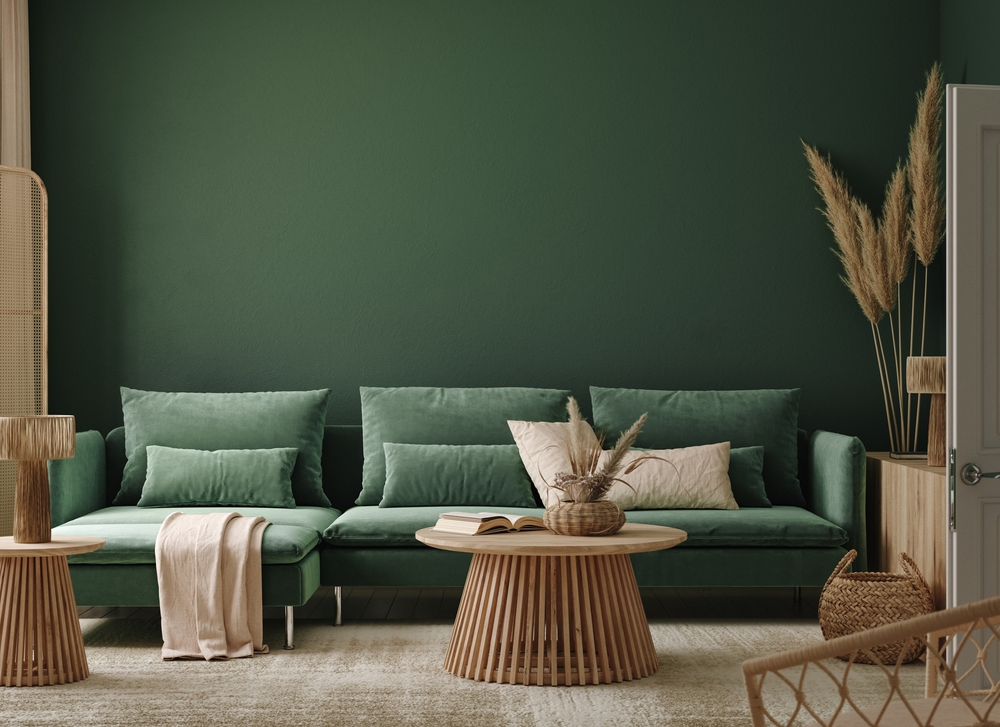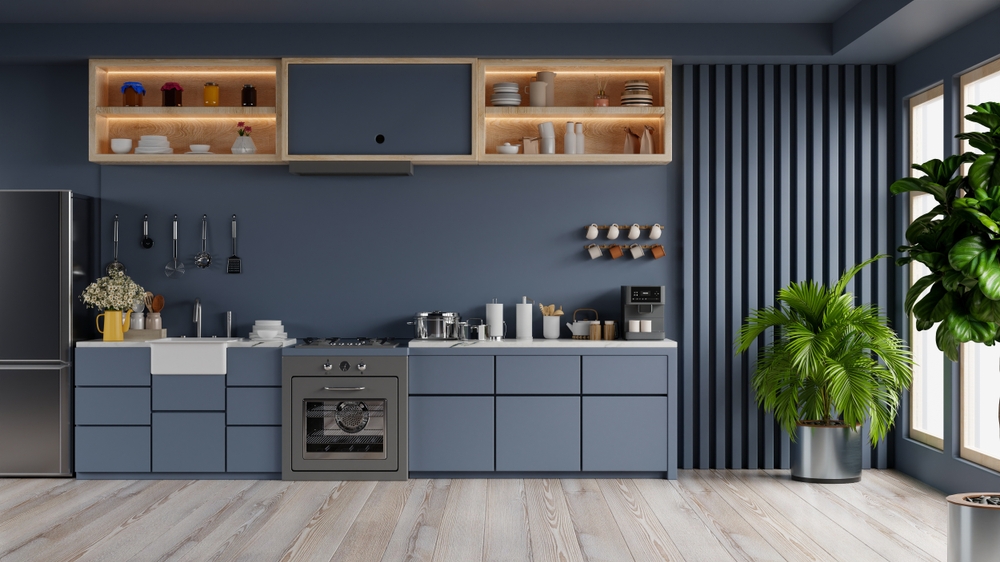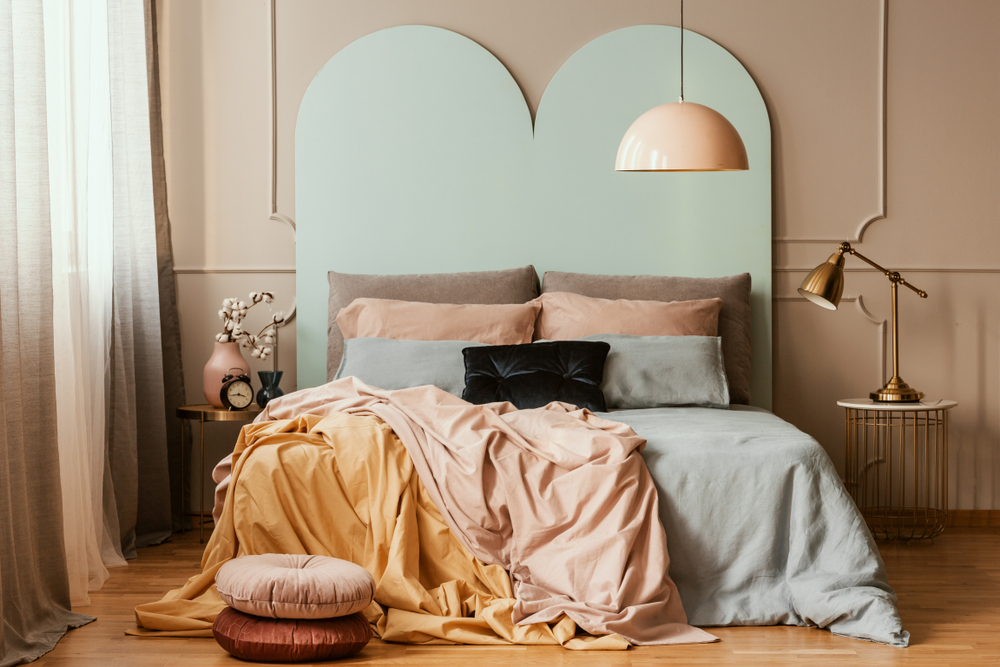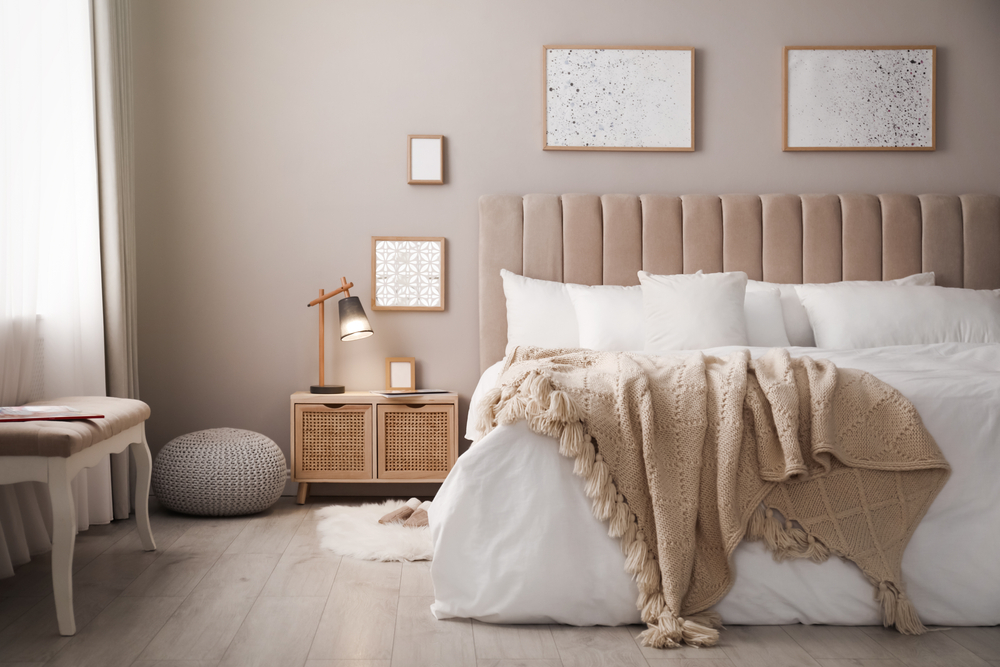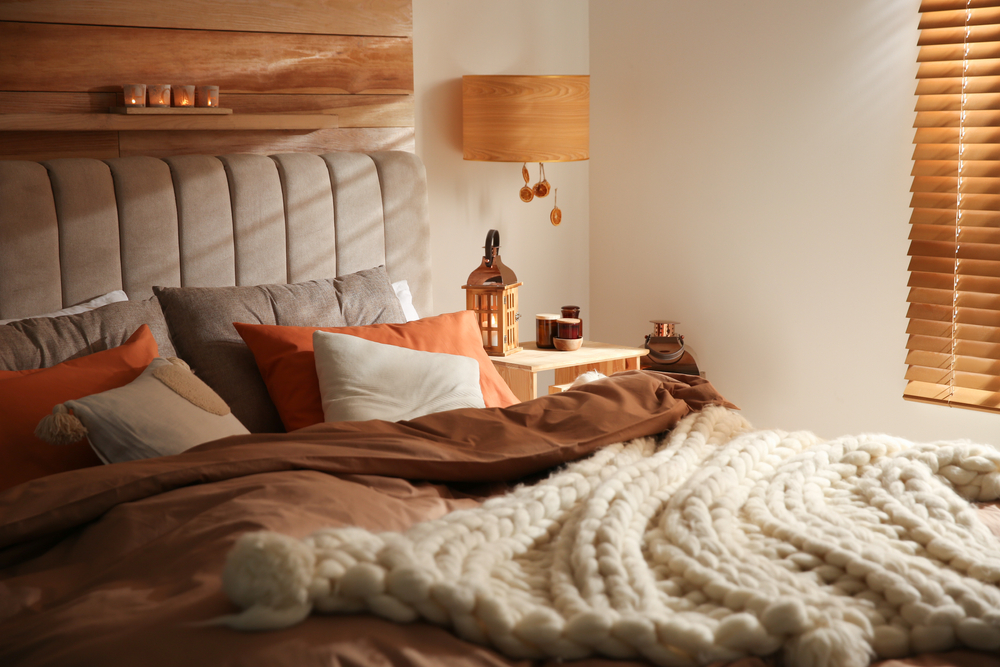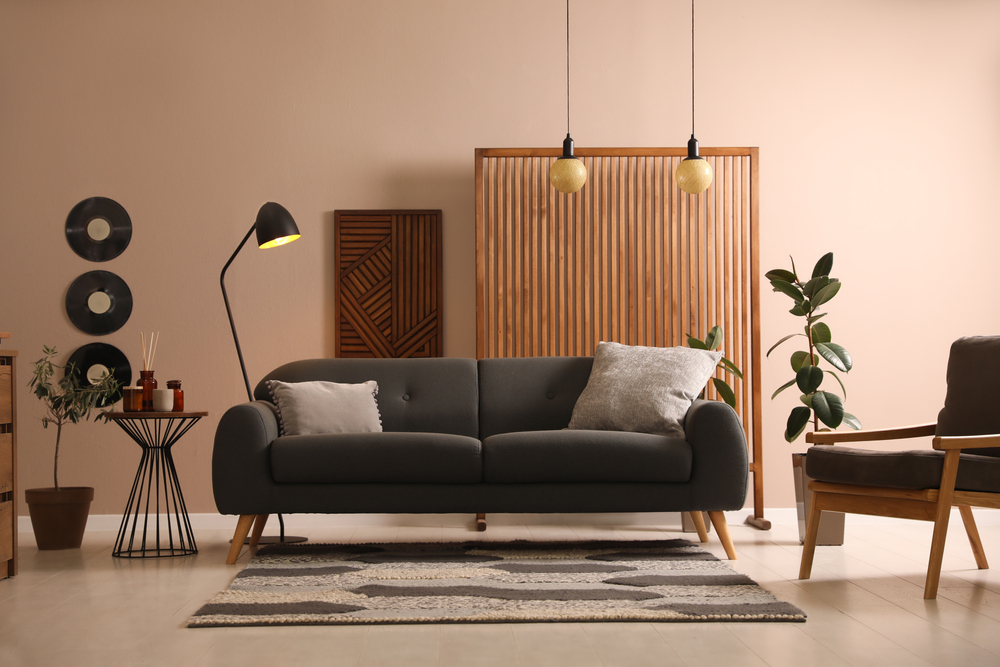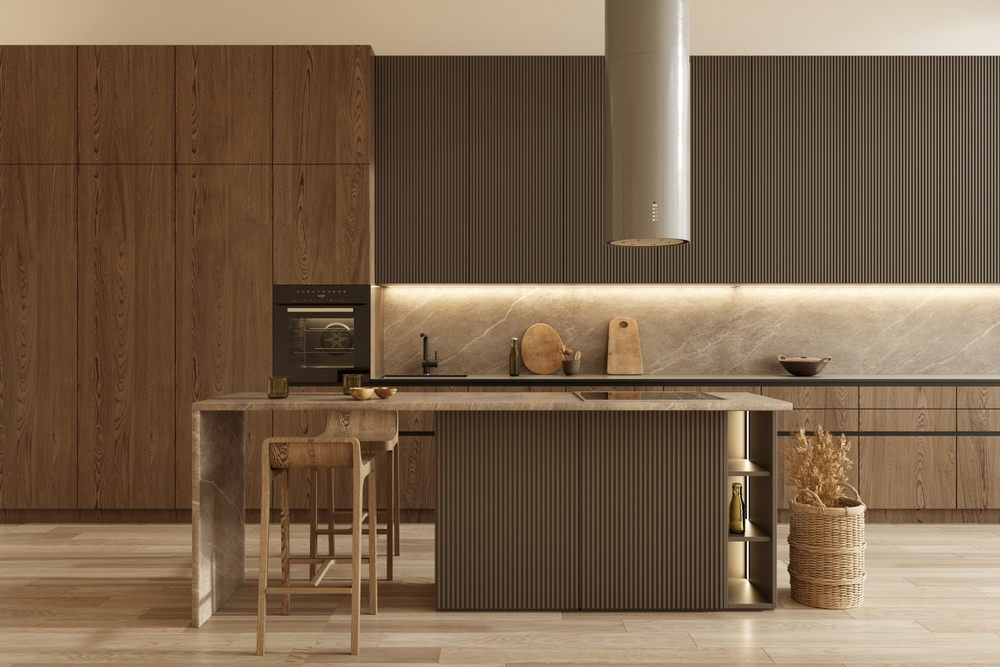Most neighborhoods look the same when you drive at night. Because no matter what makes homes unique during the day, they almost all only use a porch light or two at night. But your home doesn’t have to lose its character and statement features just because the sun went down!
You may be surprised that there are at least nine ways to light your home’s exterior. We’ll dive into expert tips to unlock the unexpected for your evening curb appeal and outdoor activities. From increasing safety to creating drama to inspiring luxury, mix and match these lighting methods to customize an unforgettable “evening look.”
1. Accent Lighting
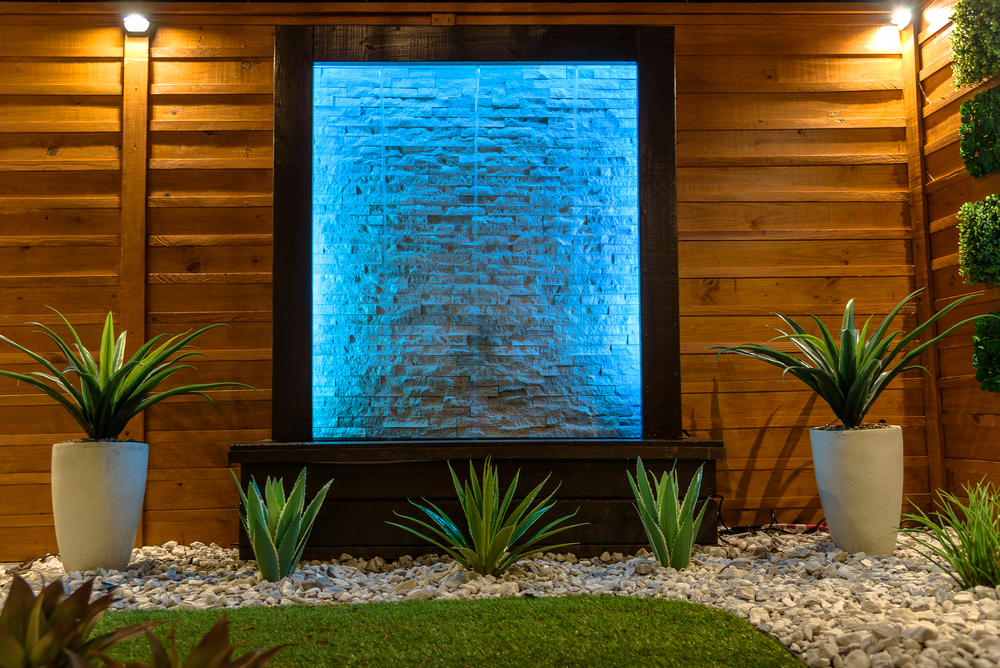
Accent lighting uses light to draw attention to a feature of your home or garden. In fact, any of the following eight lighting techniques can be used as accent lighting! For example, try using a spotlight to show off a flagpole, up-lighting on a few trees to increase their impact, or silhouette shrubbery for subtle mystery.
A tip from the experts: Trying to figure out what to accent on your home exterior? Make a list of your favorite things about your front yard (or what you’d like to add to your yard).
2. Down-lighting

Want to increase visibility for outdoor activities? Try down-lighting! This lighting technique positions the light source up high with a shade that concentrates the light towards the ground. The bright light makes evening play safer and keeps the party going after sundown.
A tip from the experts: Trees are a great place to nestle down-lighting sources with finesse.
3. Highlighting

You’ve likely seen yards in a fancy neighborhood that look like their trees are glowing somehow. They’re probably being highlighted! By shining a spotlight or two from the base of a tree or other feature, the light will reflect only off the object. This concentrated glow makes the object look like it is lit from the inside!
A tip from the experts: Highlight is a simple way to immediately make your home look upscale and luxurious.
4. Moonlighting
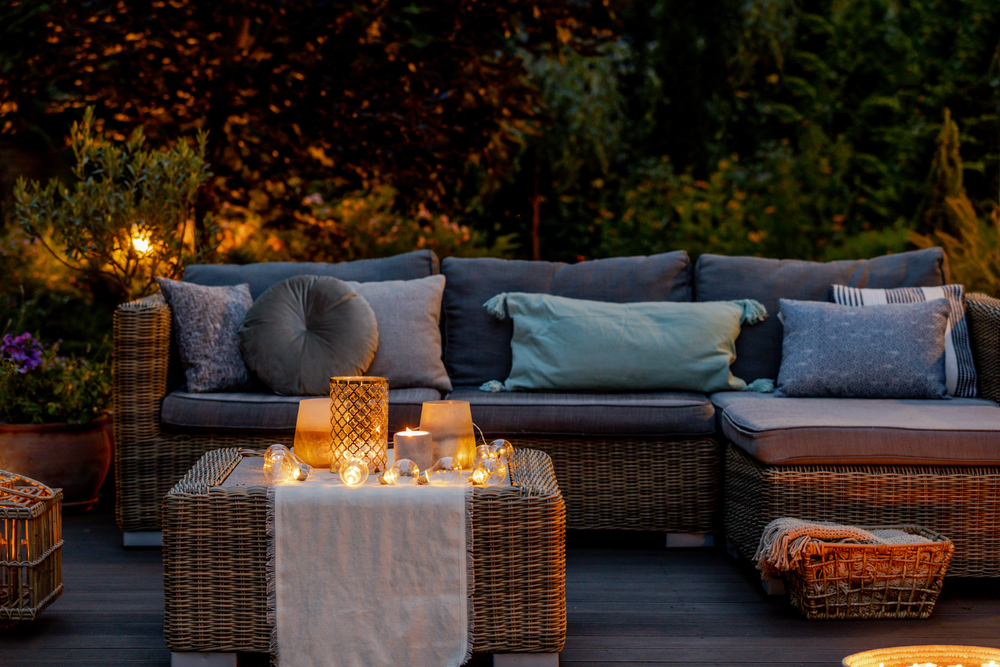
Are you looking for more magic and romance in your outdoor space? Then try out moonlighting! Like down-lighting, moonlighting uses a high-up light source to concentrate light downwards. However, this method uses more subtle sources and dimmer light– mimicking the softness and mystery of a full moon!
A tip from the experts: Moonlighting is most effective in backyards and wooded areas, where the soft light can trickle down through the leaves.
5. Silhouetting
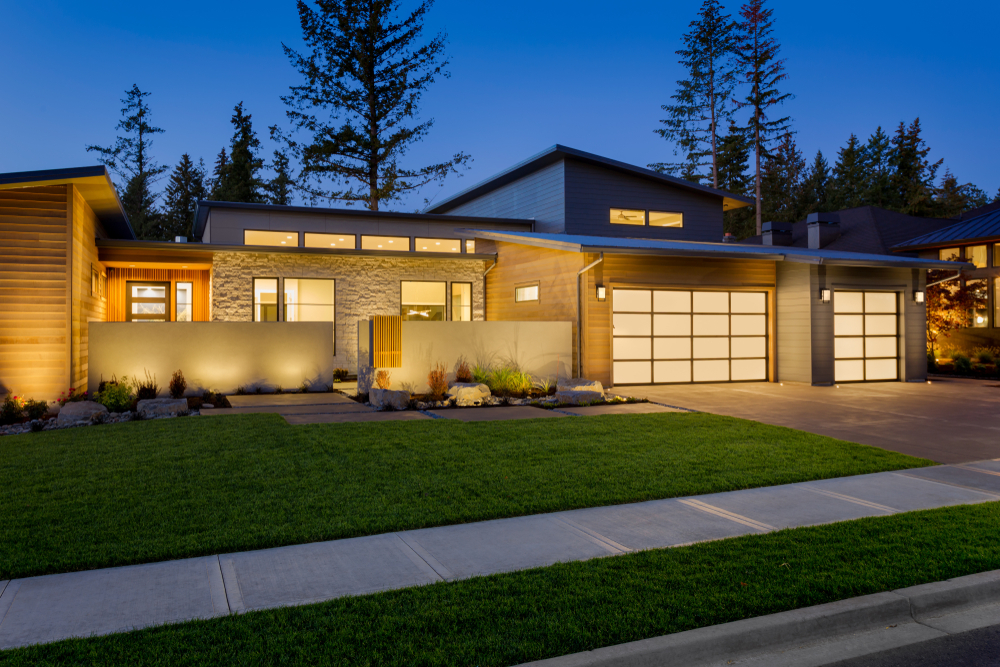
Silhouetting is the opposite of highlighting, but its effect is equally dramatic. Instead of lighting the feature itself, you can use the light source behind a tree and the wall. This will shine the light on the wall and cast the tree or other features into shadow. So you’ll get the soft shape of your feature, giving impact in a subtle way.
A tip from the experts: Make sure to angle the light towards the wall to create the greatest effect!
6. Shadowing

Want to spread the beautiful pattern of your tree leaves against your home? Then shadowing is the perfect technique for you! Shadowing combines highlighting with silhouetting for a completely new effect.
Like silhouetting, you’ll position your light source towards a wall behind the tree. But, like highlighting, you’ll put the light in front of your tree. As a result, you’ll cast a dramatic shadow of your tree against your home while clearly illuminating the trunk.
A tip from the experts: This works best with tall, leafy trees for an enchanting summer evening. The bare branches will look stunning in the winter too!
7. Path-lighting

Upgrade the magic and safety of your front walk or garden path with path-lighting! Solar lights are easy to install and come in endless designs and colors. Not only will path lights make your home safer, but you’ll get to enjoy your plants and landscaping around the clock.
A tip from the experts: Space your path lights 5 to 10 feet apart, depending on the lamp’s brightness.
8. Up-lighting
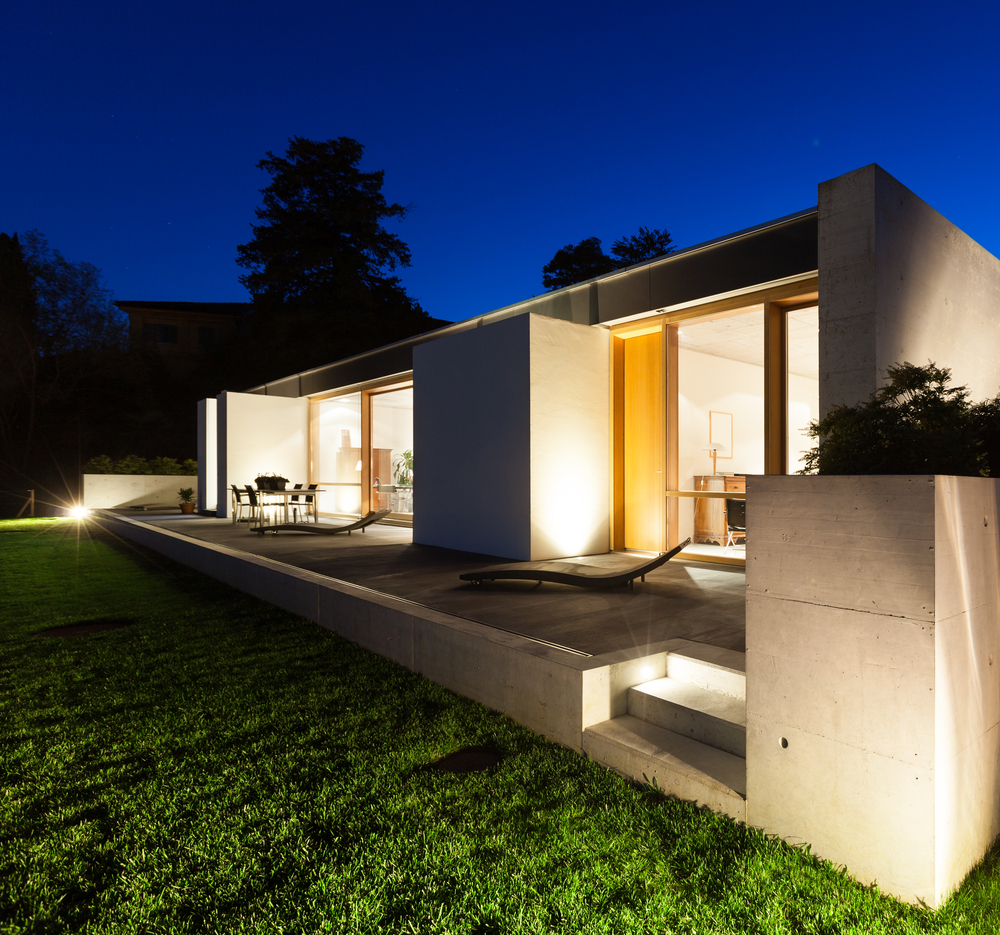
Want to add drama with a contoured view of your home? Up-lighting uses spotlights to throw light upwards on your home exterior. You’ll work with the natural layers of your home to create interest and luxury. Even in a cookie-cutter development neighborhood, your home will stand apart!
A tip from the experts: Try staggering these lights along the ground level and roofline to maximize the impact of your home’s features.
9. Wall-washing
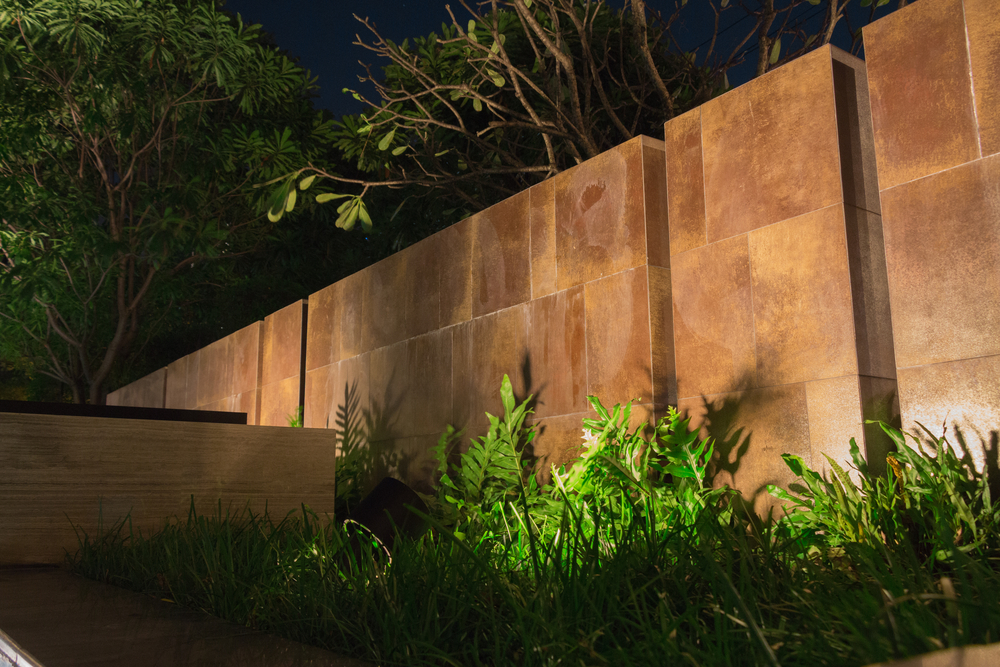
Our final lighting tip brings us to wall-washing. This method uses focused ambient lighting to cast even light across an entire wall. Instead of the dramatic shadowing created by up-lighting, you’ll get a clear picture of the garden or home wall without harsh light.
A tip from the experts: The key to great wall-washing is placing the light source at a wide enough angle. Hide the source in low foliage for added mystery.
Need Help?
Proper lighting is essential to a fully functioning home– but it can be challenging to nail balanced brightness, great fixtures, and a budget! Contact the experts at Illuminations for advice on your project!
